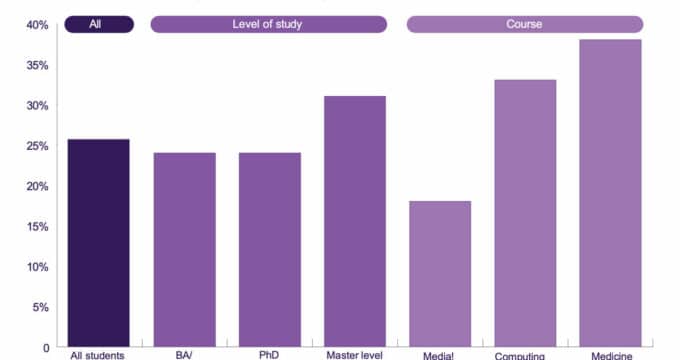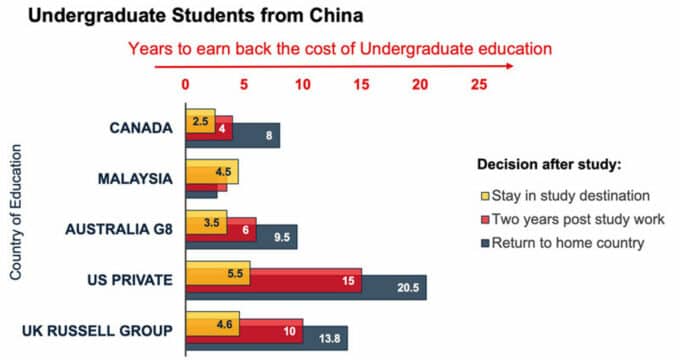Consumer trends to watch in 2019
A new global market research report says that consumers aged 50–59 should be central to business strategies given their relatively high incomes, which in 2018 were 28% higher than those in other age groups. This is one of the highlights of a white paper by Euromonitor International that outlines global consumer trends to watch in 2019.
There’s an important consideration to keep in mind regarding this age group, says Euromonitor: it's a consumer segment that is very interested in staying youthful and active and that shares many of the same values as younger people.
For educators, developing courses and services for older students will be crucial going forward due to the sheer size of this demographic. The paper singles out the example of Japan, a country in which half of the population will be 50+ by 2025. As the following chart indicates, Japan will hardly be the only major market in which older people will represent much larger proportions of national populations in 2025 than in 2018.

Older but also youthful and adventurous
What do “older” people – many of whom have spent their lives living far more healthfully than their parents did – want to do with their discretionary income? For a growing number, travel abroad is a compelling option, and as we know, study abroad is an option within the travel category. Sean Berenson of Flight Centre NZ, notes that baby boomers are “more confident, discerning and adventurous about travel than the generations before them” and have “a greater appetite for tailored experiential travel.” The whitepaper notes that this consumer demographic has developed tastes and preferences they are able to explore thanks to their relatively higher incomes, and these preferences are relevant for education providers wanting to provide unique and competitive study travel experiences:
“From the rise of ‘locavores’ seeking hyperlocal food, to eco-luxe glamping holiday experiences, from craft spirits and beer to homemade baby food and artisan beauty, consumers are searching for authentic, differentiated products and experiences which allow them to express their individuality.”
Other trends in focus
“Digitally together”: The research firm notes consumers are using online platforms to “share experiences to create and engage in activities together” and that “digital connectivity is increasingly important as people continue to spread out around the world without wanting to lose touch.” They emphasise the importance of video chatting, citing the stat that “globally, 45% of people share photos or videos weekly, up from 38% in 2015.” Educators should create opportunities for students to capture and share their experiences of study abroad. Part of the joy of studying abroad, after all, are the stories students get to share with parents and friends back home. Please see our recent post “The new rules of digital marketing” for best practices and tips in building consumer engagement across digital channels. “Everyone’s an expert”: With consumers now able to price shop and compare notes with other consumers who’ve tried out a product or service, Euromonitor makes the point that “now companies must constantly innovate, drive prices down and streamline and aestheticise their offerings to entice shoppers.” Moreover, it’s crucial to educators’ business strategies in 2019 to harness the power of student reviews and to get their marketing working around the clock. The whitepaper calls for “multi-platform marketing strategies that consistently remind the consumer of their importance and individuality.” For more on peer-to-peer marketing, please see another recent post: “Let them talk: The power of student reviews”. “Finding my JOMO”: As much as consumers, including students, are looking for service providers who make their lives easier and more time-efficient through digital platforms, there is an exception to this: JOMO (i.e., the joy of missing out). This trend describes how people are growing more aware of – and even worried about – their reliance on all-things-web (e.g., by consulting screen time alerts on their mobile phones and even downloading apps to limit screen time). An increasing number of people in more developed markets are consciously carving out space to be completely unconnected – to live in the moment and to become better engaged with offline experiences. Study abroad providers can respond to this by offering fulfilling and personalised learning experiences that rely on human interaction free of digital supports – as part of their overall programme at least. When students choose study abroad, after all, the opportunity to truly connect with students from different nationalities is part of the goal. “I want it now”: The whitepaper notes that consumers are “increasingly turning to apps that help them organise their lives and are especially intrigued by innovations that help them avoid queues and reduce waiting time.” This underlines the value of school apps that provide up-to-the-minute, relevant information for prospective and current students as well as the value of well-designed application and website systems, FAQs, email protocols, and live chats to give students the answers they need, when they need them. For additional background, please see:
















